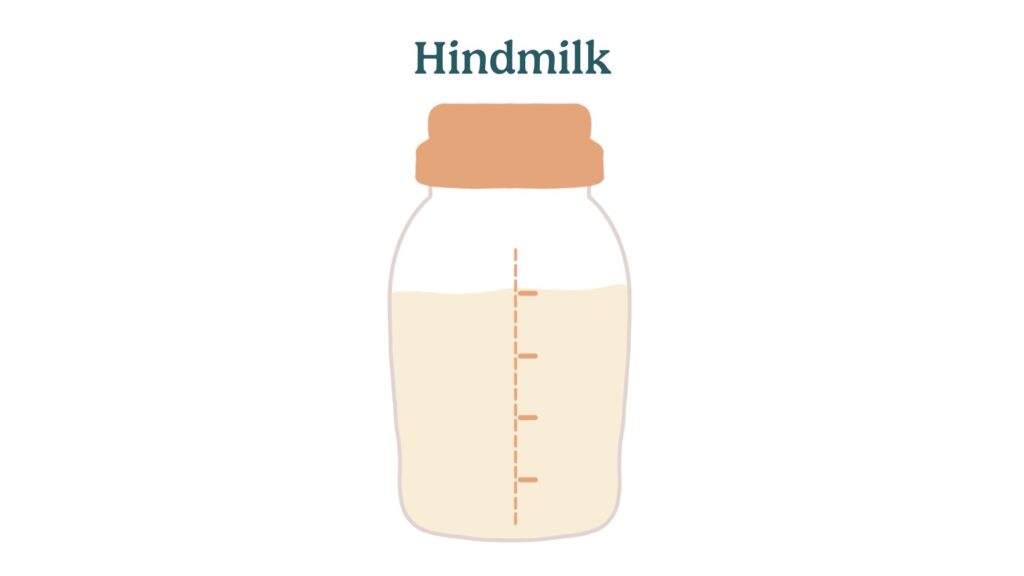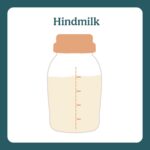hindmilk

Hindmilk
Hindmilk refers to the milk that comes towards the end of a breastfeeding session. It tends to be creamier and higher in fat compared to the milk (foremilk) that comes out at the beginning of the feeding.
However, it's important to note that foremilk and hindmilk are not distinct types of milk, but rather a gradual change in composition during feeding. The fat content of breastmilk is more related to the time between feedings and the length of the feedings.
Both foremilk and hindmilk are equally important and designed to nourish your baby with exactly what they need.
What to watch out for
While a true foremilk and hindmilk imbalance (now referred to as lactose overload) is not common, here are some signs to be aware of:
- Explosive, frothy stools: If your baby's stools are explosive, frothy, foamy, and frequent, it might be a sign of lactose overload, where they're getting too much watery, higher-lactose milk.
- Excessive gassiness and discomfort: Babies with lactose overload tend to be excessively gassy and very uncomfortable, often crying more than average.
- Weight gain: Poor weight gain is typically not a sign of lactose overload, but rather an issue with overall milk intake. If you're concerned about your baby's weight gain, consult your pediatrician.
To ensure your baby gets a good balance of milk:
- Offer more frequent feedings: This prevents milk with higher water and lactose content from building up in your breasts.
- Make sure one breast is drained before offering the other: This ensures your baby gets all the benefits of your milk.
- Let your baby lead the way: Instead of timing the feed, have your baby nurse on one breast until they naturally stop.
- Mamma’s Diet: Eating higher fat diet as the lactating mama will not increase the percentage of fat content in your milk.
If you're concerned about your baby's milk intake, consult a pediatrician and a lactation consultant for personalized advice. Schedule a consultation with an IBCLC for more guidance.
Physical limitations or health circumstances
Certain factors can affect the balance of milk your baby receives:
- Oversupply: If you have an oversupply of milk, your baby might take in too much milk at once. Nursing from a laid-back position can help slow your flow.
- Infrequent feedings: Going several hours between nursing sessions means your baby might get more of the watery foremilk. Nursing more frequently can help balance this.
- Improper latch: A poor latch can affect how effectively your baby drains the breast. Ensuring a proper latch can help with milk transfer. Read more about a good latch.
- Strong or overactive letdown: If you’re letdown reflex feels forceful and you frequently notice baby spewing, sputtering, and choking during your letdown, this can also play a role in causing a lactose overload. Laid-back breastfeeding and reducing oversupply can sometimes help manage symptoms.
Other terms
Understanding related terms can help you manage your breastfeeding journey more effectively:
- Foremilk: The initial milk that flows at the beginning of a feeding. It tends to be more watery and higher in lactose.
- Lactose overload: A condition where a baby regularly gets more watery, higher-lactose milk and less fatty milk, potentially causing digestive discomfort.
- Let-down reflex: The reflex that releases milk from the alveoli into the ducts, allowing it to flow to your baby. Learn more about let-down.
- Lactation consultant: A professional who provides expert advice on breastfeeding techniques and issues, including managing milk balance. Find out what an IBCLC can do for you.


